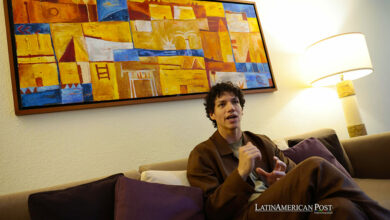Teotihuacán’s underground mysteries
This ancient city in Mexico may hold answers to questions historians and archeologists have been asking for decades

The city of Teotihuacan, a world-renowned archaeological zone located northeast of Mexico City, has been a place of interest that many people want to visit, not only for touristic purposes, but also to learn: people want to know its deep secrets. Due to this interest, excavations and research have been carried out to reveal what it keeps buried.
In 1675 Carlos de Sigüenza y Góngora carried out the oldest research in this place began at the top of the terraced structure of the pyramid of Luna. However, his research is considered today superficial and without significant structural movements. It was until 1865 that Ramón Almaráz led the investigation with the team of the Scientific Commission of Pachuca that consisted of a topographical survey that determined the geographical coordinates of the site.
In 1885 the president in turn, Porfirio Diaz, created the General Inspection of Monuments and left to Leopoldo López in charge of restoring and taking care of the monuments of the region. López carried out an expedition in the Teotihuacan zone and found Los Murals of Teopancaxco, of La Agrícoltura and some that he called “Los subterráneos”. Until 1917, the Ministry of Agriculture and Development sought to define rural areas and Manuel Gamio, who led the project, succeeded in creating a comprehensive study of indigenous peoples with the urban area, one of the most important anthropological studies in Mexico.
In 2015 large quantities of mercury were found along with more than one hundred thousand objects under the Temple of the Feathered Serpent by archaeologists and researchers of the National Institute of Anthropology and History (INAH). In May of this year according to data of the BBC they were able to find subterranean treasures but they did not find any tombs, even though it was expected that by means of an excavation they would find tombs of old kings, which would give way to really reveal the culture that the people of Teotihuacán come from. It could also allow scientists to formulate theories as to why these people disappeared so early without leaving a trace.
Sergio Gómez, who has been in charge of the investigation since 2003, formulated a hypothesis on alleged underground treasures that would finally reveal the origin of the Teotihuacan culture, that likewise ensures that in the time of the Kings and the government in Teotihuacán at death these treasures were incinerated. This way, Gómez offers a theory on why these treasures and this data cannot be found.
For now he is convinced that he will find something significant to show because in the investigation he says that evidence shows something heavy was dragged from the outside through the tunnel. With reliable evidence Sergio Gómez will continue his search until he discovers and unmasks the myths or truths of the most important culture of the city that, for Mexicans and for the rest of the world, remains a mystery.
Latin American Post | Cristina Torres
Copy edited by Laura Rocha Rueda





